Watercolor and gouache on Illustration Board, 11 x 17″.
Part 1: Why do we need reference?
— Refining searches through specificity —
Today begins a 3-part post on “referential” advice. I will include a smattering of links that some of you may find useful, but my main purpose is to convey my thought process — in particular, the way in which I increase the depth of my knowledge pool (despite starting at the shallow end).
One of the key elements in nearly every image I create is reference, photographic or otherwise. Even those images that require no direct quotations benefit from previous memories, whether consciously cited or not. Aside from my weekly exhibition of embarrassing photos, it is a subject I frequently talk about, often because I am asked, but also because I think it speaks to some larger themes in my work and creative process. On a purely conceptual level, reference (of any kind) is all about knowledge; it informs us so that we, as comic book artists (illustrators, cartoonists, whatever), can inform our readers. Ideally, this is done so smoothly, so unobtrusively, that the richness of detail in subject and setting enters the reader’s mind without conscious consideration, submitting focus to the narrative while simultaneously supporting it.
2009. Acrylic and gouache on bristol board, 11 x 17″.
This quest for reference reveals something about the basic structure of our minds. Anyone who has made an attempt to create a representational image of any subject will quickly realize that our natural talents lie in recognition, not reproduction. While I believe the former is an instinctual capability, the latter can, through attention to detail (and years of practice), be honed to a comparable, if not equivalent level.
 |
|
Steve Rogers Head Study. 2010.
Gouache and acrylic on bristol board, 11 × 17″.
|
Most of us can, from our earliest years, recognize familiar faces (though not all of us), and yet portraiture is consistently regarded as one of the more difficult disciplines within representational art. But why is that? Because we can all tell if the artist got it wrong. This is why phrases like “a good likeness” came into existence. Broadly speaking, this suggests that inside each of our brains is a catalog of 3-dimensional models with which to compare and contrast the faces that we see. Unfortunately, that information can be difficult to access. Have you ever tried to draw someone from memory? It can certainly be done (and practice helps), but my point is that nearly everyone comes with the facial recognition “software” pre-installed.
I use the example of faces because we are so incredibly sensitive to them, but I think the same mental process (admittedly inexplicable) applies to just about everything in the visible world. You may be able to recognize a plethora of different vehicles, but drawing them is another challenge altogether. As representational artists, this is our central challenge. Our audience knows when we don’t know. If this were not true, then we wouldn’t have popular artists — no one would be able to tell one from another.
Ink on Marvel board, 11 x 17.25″.
Reference Used
Because of this imbalance, those of us in the image-making business must reinforce our work with research in order to make a convincing reproduction of the world around us, regardless of our particular style’s proximity to reality. Individual style can, of course, dictate the type of reference needed — I take different photos for a painting than I would for a line drawing — but even the most abstract representation can benefit from real-world, visual anchors.
 |
|
Amazing Spider-Man #639. 2010.
Ink on Marvel board, 11 × 17.25″.
|
So now that we have some basic idea of why we need reference, how do we go about getting it? For me (no surprises here), the search usually begins on-line with an appeal to Google Images. Most of you are probably quite familiar with this resource by now (I’ve been using it for well over a decade), but what I’d like to share are some of the key strategies that help me to find the best kind of reference for the task at hand.
The world wide web, since its inception, has been a text-based information system. It has come a long way over the course of its life, its visual literacy improving with time, but symbols and syntax are still at its heart. In order to search for images effectively, we must take this into account by tailoring our queries to that language. Sometimes this means researching a subject before the image search even takes place — what I call “presearch.”
If you’re designing costumes, establishing the technical names for clothing and accoutrements will vastly improve any search. For example, most people refer to Captain America’s armor as chain mail, but you’ll be far more likely to find the appropriate plating and pattern if you search for scale armor (or lorica plumata (or lorica squamata)). By getting to know your subject, even superficially through Wikipedia articles, you’ll be able to target your search with greater accuracy. Not limited to clothing, this applies to architecture, vehicles, weapons, appliances, tools — virtually anything. Most avenues of human endeavor demand increasingly specific nomenclature so as to match the depth of study. Use that propensity to your advantage.
(I should also note that what I’m usually aiming for is not strict historical accuracy; rather, it’s the “feel” or “spirit” of a particular era or genre that I’m trying to emulate.)
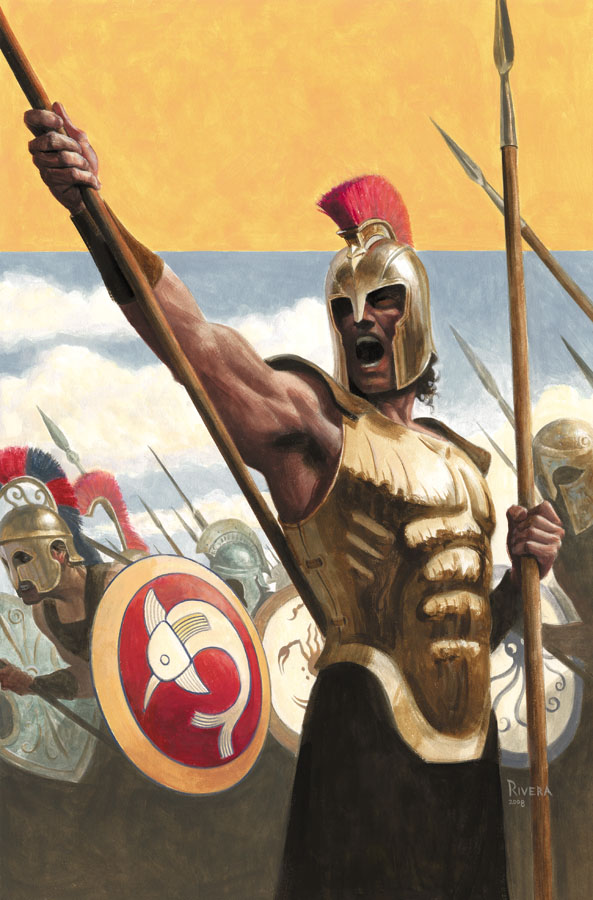 |
|
Marvel Illustrated: The Iliad #6. 2008.
Gouache and acrylic on bristol board, 11 × 17″. Reference Used |
A convenient consequence of this strategy is that you’ll find people who actually know what they’re talking about! There are thousands (if not millions) of internet-savvy people across the planet who are more than willing to share their expertise in a given subject. Some of the most helpful are reeanactors, such as The Greek Warriors, who not only go to exhaustive efforts to fabricate authentic costumes and props, but also document their work and any events in which they participate. What more could you ask for? Perhaps a trireme instead of a Greek ship? In Captain America’s case, the best resource I found was from Renaissance Faire artisans who fashioned their own costumes (and documented the entire process).
In other words, know what you’re looking for before you go searching. No matter what it is, it’s probably out there — it’s just a matter of asking the right question.


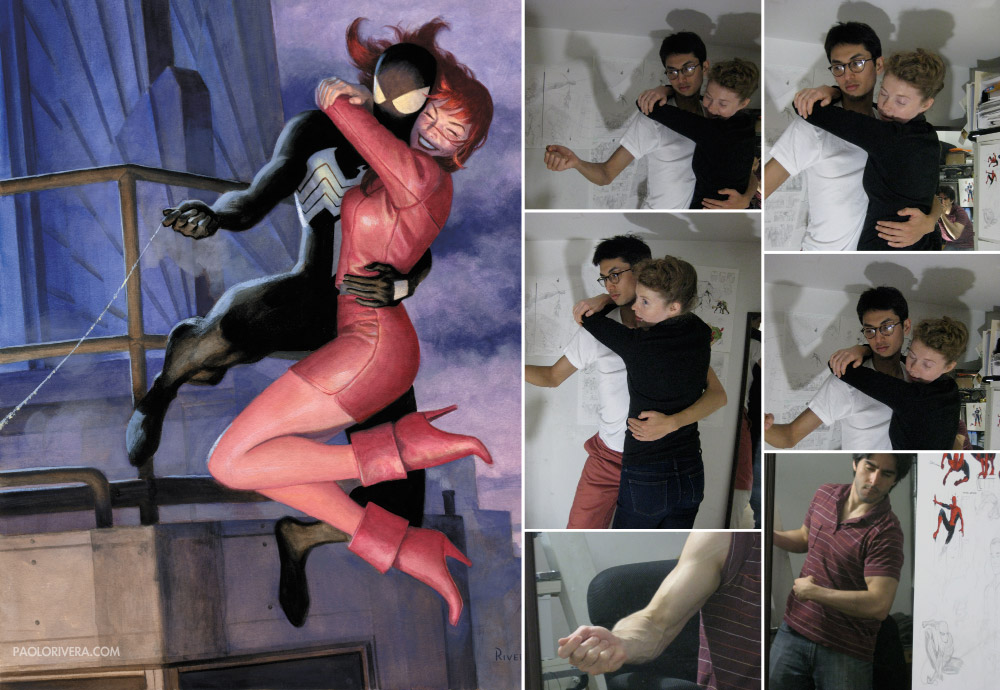
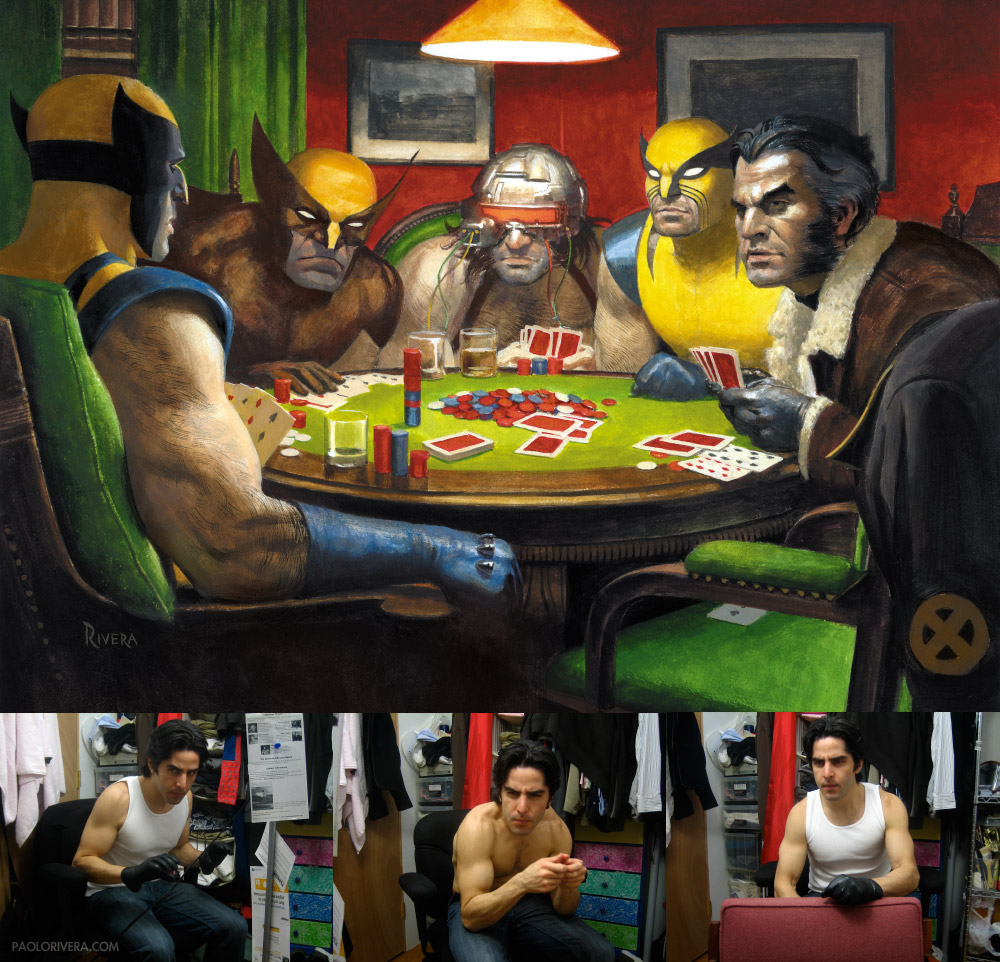
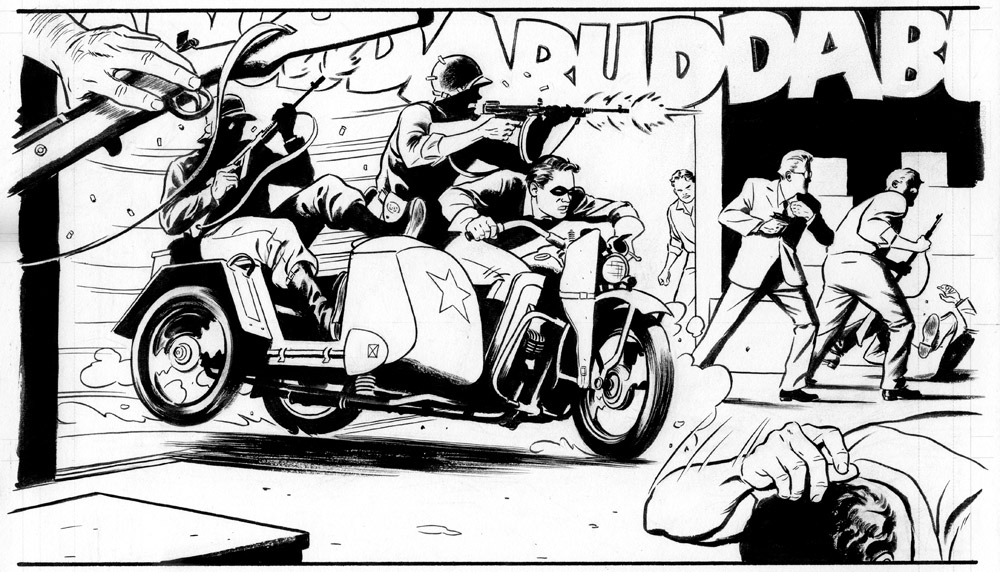

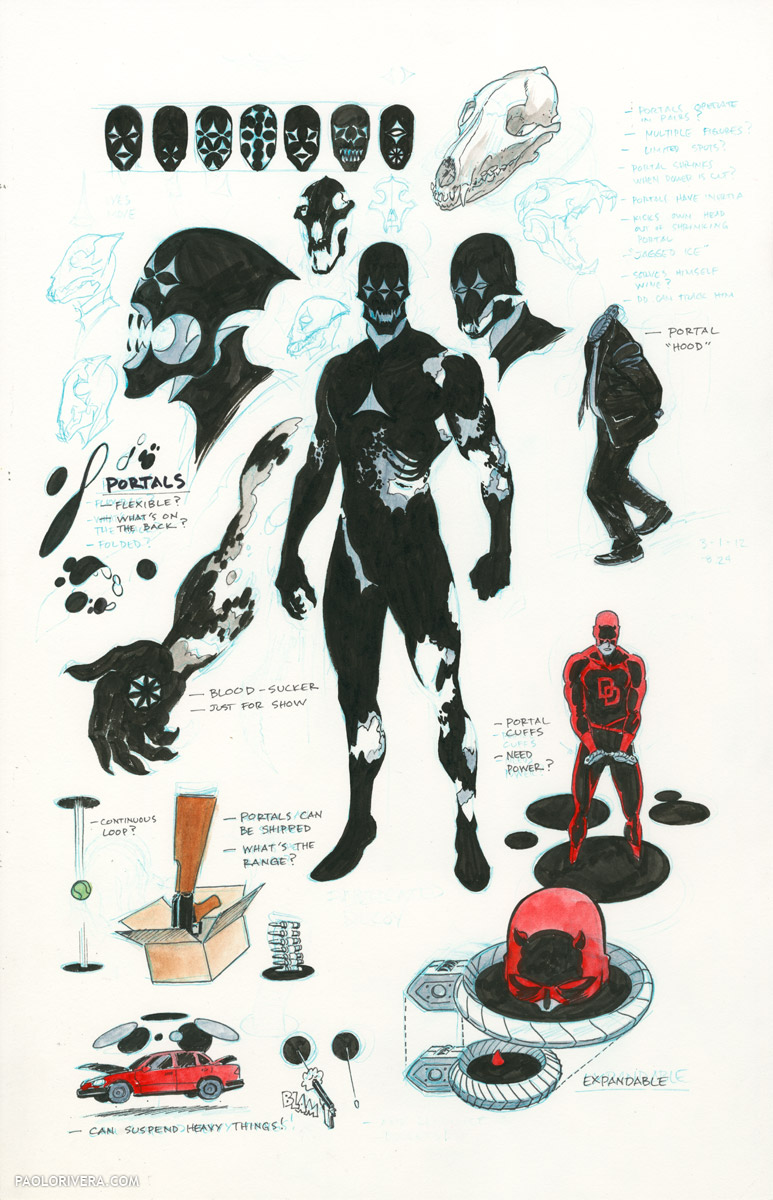
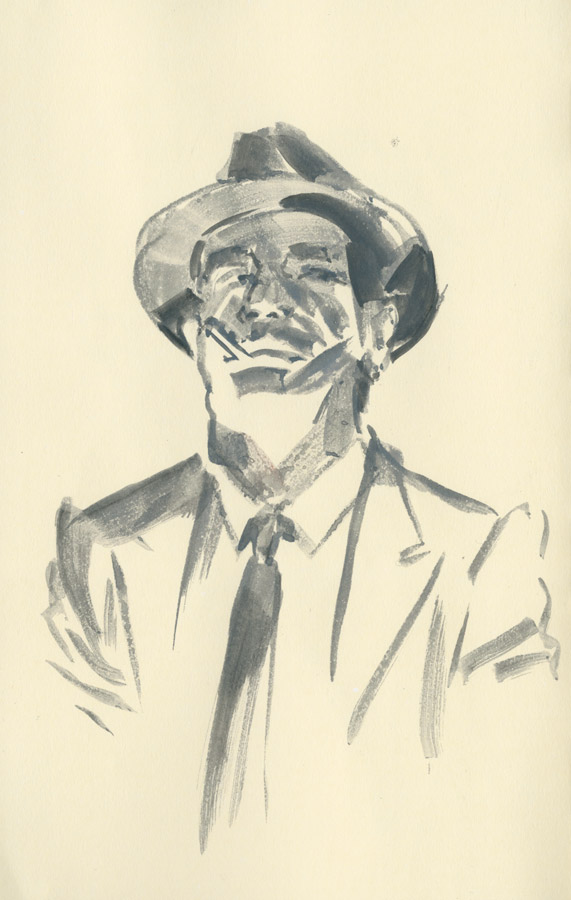
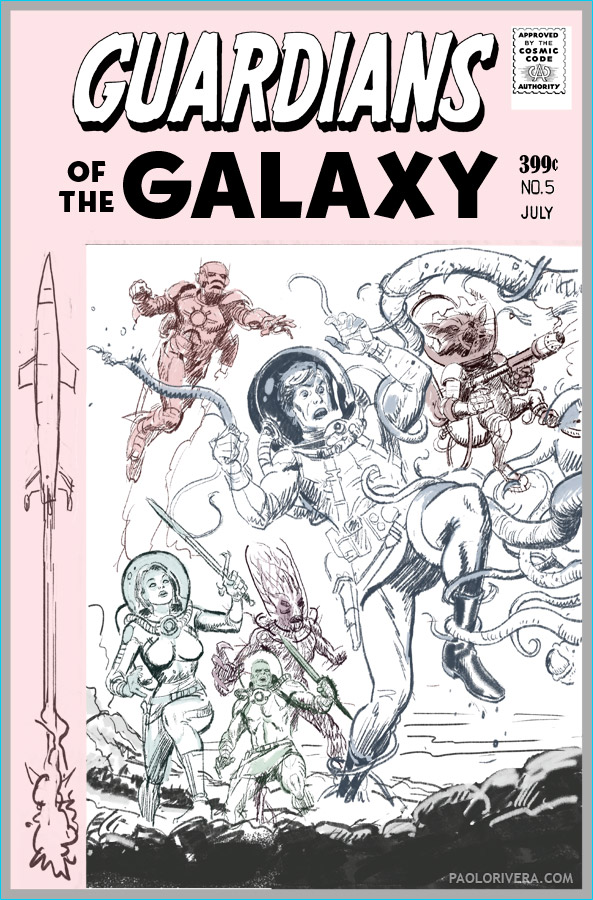
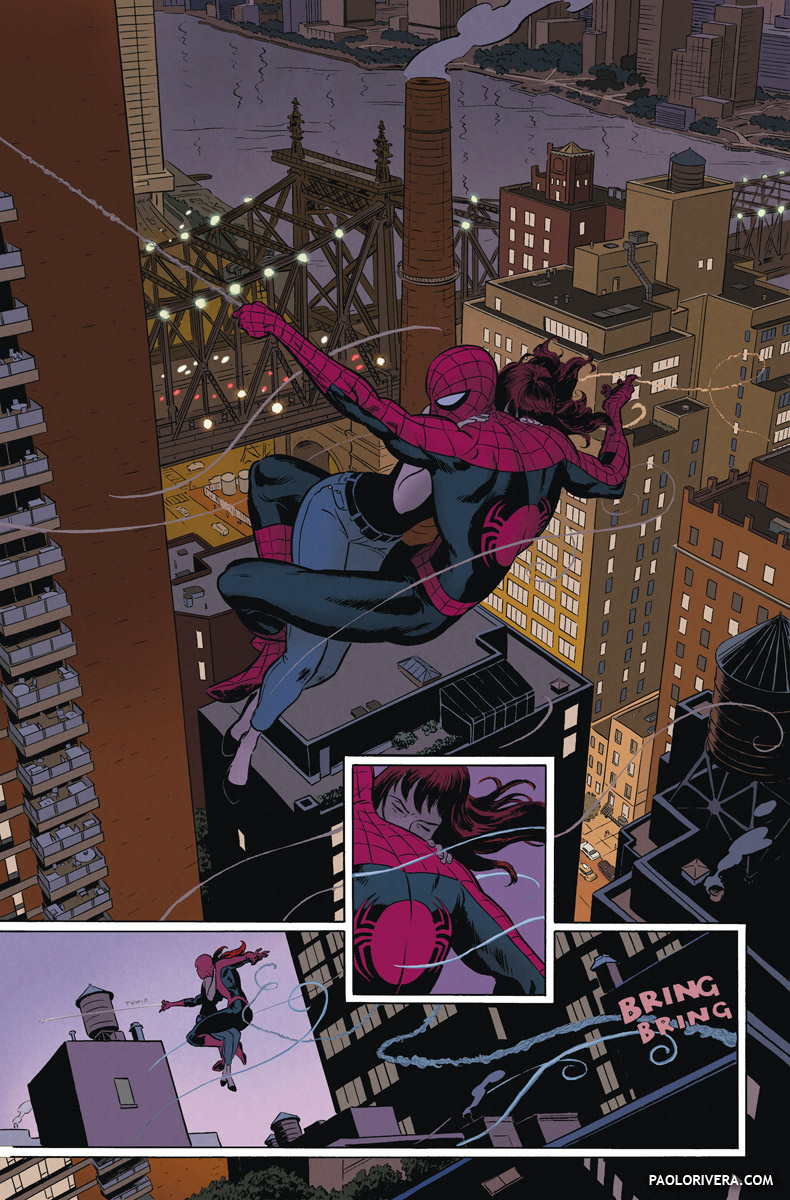

I use google images all the time. Thank you for the idea of doing the “presearch”!
Facebook Hot Girls, Most Popular Singer Girls, Top Most Famous Girls in the World.
hotentertainnews.blogspot.com
Thanks for the ideas Paolo. Apparently it pays to workout for your own ref shots;) The Greek Warriors – bookmarking that- very cool. Great Post!
I just wonder how people can make these amazing character, Thanks so these amazing pics.
Thanks for the great tips Paolo! The presearch I think will be really helpful
Very helpful post, Paolo — thank you for your insight and informational generosity. Some of it reminds me of how concept art was developed as shown in “The Art of Star Wars” books. To create the Star Wars cultures and worlds, Lucas had his concept team research and mingle different historical aesthetics to create new and imaginative — yet plausible — creatures and worlds.
Excellent.
Thanks for the tips about photo reference.
Cheers.
Glad you all enjoyed it. I hope to show you a few more tricks next time.